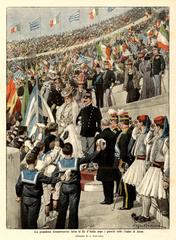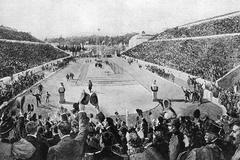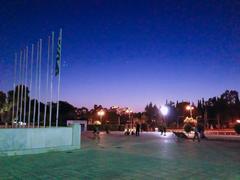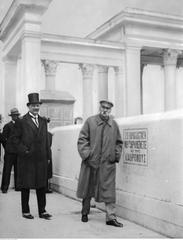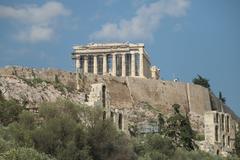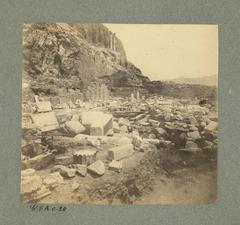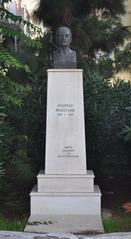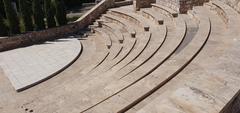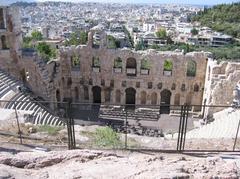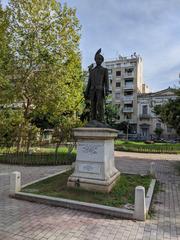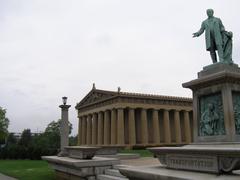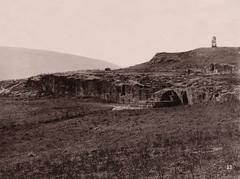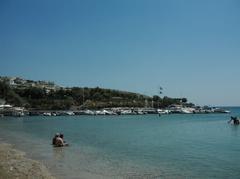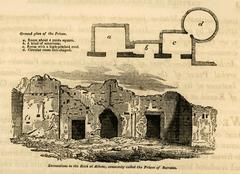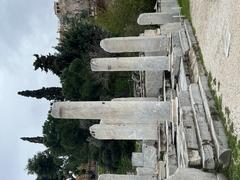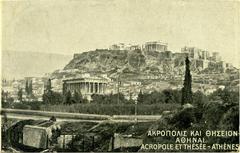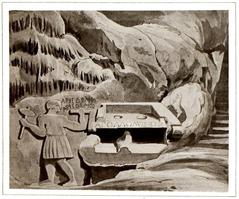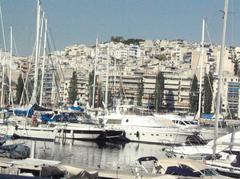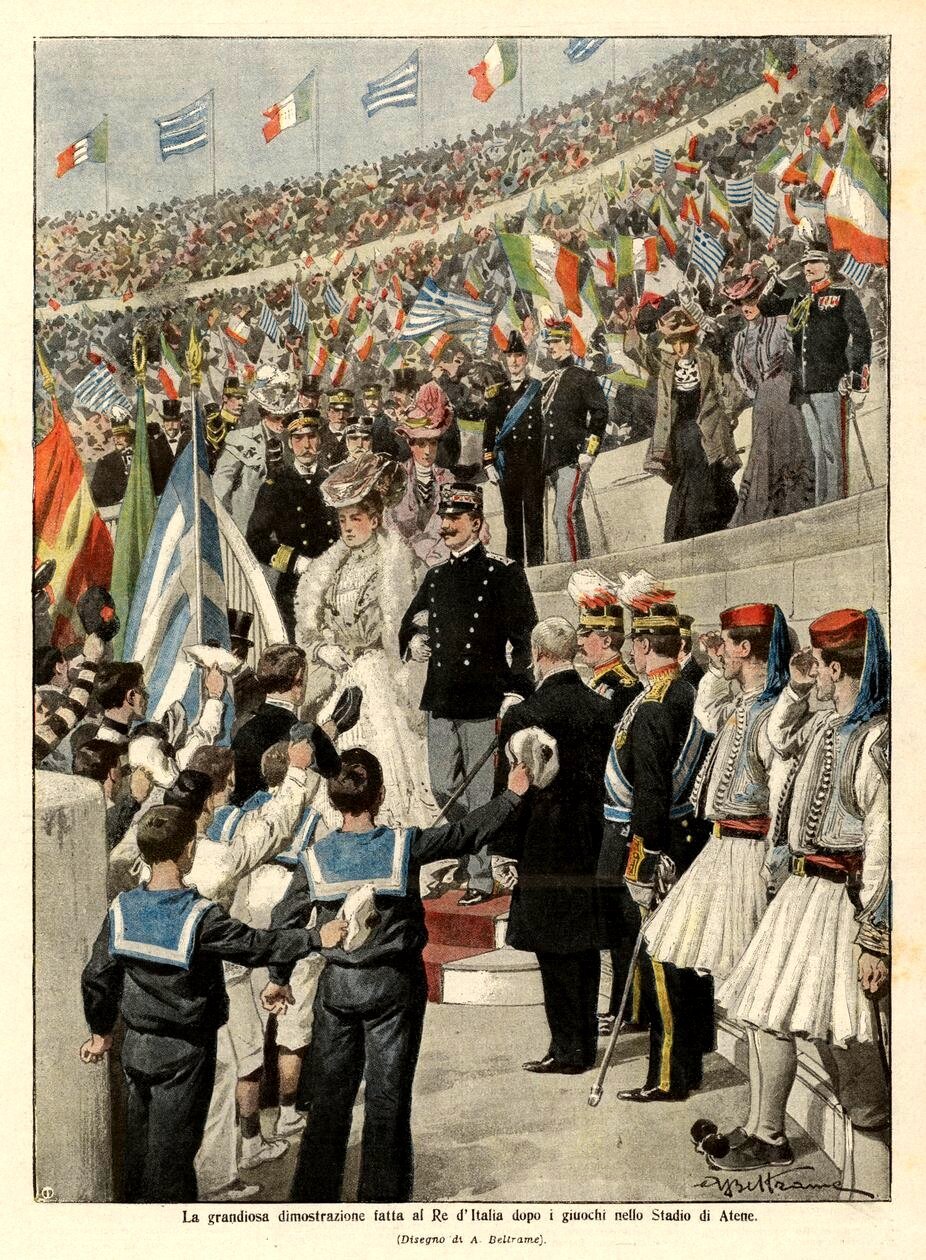
Visiting Hours, Tickets, and Travel Tips for Παναθηναϊκό Στάδιο in Athens, Greece
Date: 17/07/2024
Introduction
The Παναθηναϊκό Στάδιο, or Panathenaic Stadium, located in Athens, Greece, is a remarkable testament to the enduring legacy of ancient Greek civilization. This iconic structure is not only a marvel of historical and architectural significance but also a vibrant cultural hub that continues to attract visitors from around the world. Originally constructed in 330 BC under the guidance of the Athenian statesman Lycurgus, the stadium was initially built to host the Panathenaic Games, a religious and athletic festival in honor of the goddess Athena. Over the centuries, the stadium has undergone numerous transformations, most notably during the Roman period when it was renovated by Herodes Atticus in 144 AD (Ancient Origins). The use of Pentelic marble, the same material used for the Parthenon, added to its grandeur and historical importance (Roman Renovations).
The stadium’s historical significance is further underscored by its role in the revival of the modern Olympic Games. In 1896, the Panathenaic Stadium hosted the first modern Olympic Games, marking a pivotal moment in sports history and setting the stage for the global Olympic movement (1896 Olympic Games). Today, the stadium continues to serve as a venue for various cultural and sporting events, including the annual lighting of the Olympic flame. It stands as a symbol of the continuity between ancient and modern Greece, representing the enduring legacy of Greek civilization (Cultural Significance).
Table of Contents
- Introduction
- Historical Background of Παναθηναϊκό Στάδιο
- Modern Revival
- Visitor Information
- Cultural Significance
- Architectural Features
- Preservation and Restoration
- Visitor Experience
- FAQ
- Conclusion
Historical Background of Παναθηναϊκό Στάδιο
Ancient Origins
The Παναθηναϊκό Στάδιο, also known as the Panathenaic Stadium, is a historic site with roots tracing back to ancient Greece. Originally constructed in 330 BC under the auspices of the Athenian statesman Lycurgus, it started as a simple, rectangular racecourse for the Panathenaic Games, a religious and athletic festival held every four years in honor of the goddess Athena. The games were a significant event in ancient Athens, featuring athletic competitions, musical contests, and religious ceremonies (Ancient Origins).
Roman Renovations
The stadium underwent significant renovations during the Roman period, particularly under the rule of Herodes Atticus in 144 AD. Herodes, a wealthy Athenian benefactor, transformed the stadium into a grand marble structure, increasing its capacity to approximately 50,000 spectators. This renovation included the addition of a semi-circular end, making it one of the largest and most impressive stadiums of its time. The use of Pentelic marble, the same material used for the Parthenon, added to its grandeur and historical significance (Roman Renovations).
Decline and Rediscovery
Following the decline of the Roman Empire, the stadium fell into disuse and was eventually buried under layers of earth and debris. It remained largely forgotten until the 19th century when archaeological interest in ancient Greek sites began to resurface. The rediscovery of the stadium was part of a broader movement to revive classical Greek culture and heritage, which gained momentum during the Greek War of Independence in the early 19th century (Rediscovery).
Modern Revival
The modern revival of the Παναθηναϊκό Στάδιο is closely linked to the history of the modern Olympic Games. In 1869, the stadium was excavated and partially restored by the Greek architect Ernst Ziller. However, it was the efforts of Evangelos Zappas, a wealthy Greek philanthropist, that truly brought the stadium back to life. Zappas funded the first modern Olympic Games, held in Athens in 1870 and 1875, which took place at the Panathenaic Stadium (Modern Revival).
1896 Olympic Games
The most significant event in the stadium’s modern history is undoubtedly the first modern Olympic Games in 1896. The games were organized by the International Olympic Committee (IOC), founded by Pierre de Coubertin, and marked the beginning of the modern Olympic movement. The Panathenaic Stadium was chosen as the main venue for the games, hosting the opening and closing ceremonies, as well as several athletic events. The stadium’s capacity was expanded to accommodate 80,000 spectators, and it became a symbol of the revival of the Olympic spirit (1896 Olympic Games).
Subsequent Olympic Games
The Παναθηναϊκό Στάδιο has continued to play a role in subsequent Olympic Games. It was used as a venue for the 1906 Intercalated Games, an event organized by the IOC to celebrate the 10th anniversary of the modern Olympics. Although the Intercalated Games are not officially recognized by the IOC today, they were an important milestone in the history of the Olympic movement. The stadium also hosted events during the 2004 Athens Olympic Games, including the archery competition and the finish of the marathon race (Subsequent Olympic Games).
Visitor Information
Tickets and Visiting Hours
Visitors can purchase tickets at the entrance or online through the official website. The Panathenaic Stadium is open daily from 8:00 AM to 7:00 PM, with extended hours during the summer months. Ticket prices are generally affordable, with discounts available for students, seniors, and children. Guided tours are also available for an additional fee.
Travel Tips
The Panathenaic Stadium is easily accessible by public transportation. It is located in the heart of Athens, near many other historical sites. Visitors can take the metro to the Syntagma or Evangelismos stations and then walk to the stadium. It is recommended to wear comfortable shoes and bring water, especially during the hot summer months.
Nearby Attractions
While visiting the Panathenaic Stadium, tourists can also explore nearby attractions such as the National Garden, the Temple of Olympian Zeus, and the Acropolis Museum. These sites offer a comprehensive glimpse into the rich history and culture of Athens.
Accessibility
The stadium is equipped with ramps and elevators to accommodate visitors with mobility issues. Special seating areas are also available for individuals with disabilities (Accessibility).
Cultural Significance
Beyond its role in sports, the Παναθηναϊκό Στάδιο holds a significant place in Greek culture and history. It is a symbol of the continuity between ancient and modern Greece, representing the enduring legacy of Greek civilization. The stadium is also a popular venue for cultural events, concerts, and ceremonies, including the annual lighting of the Olympic flame, which takes place before each Olympic Games. This ceremony, rooted in ancient Greek tradition, underscores the stadium’s ongoing connection to the Olympic movement and its cultural heritage (Cultural Significance).
Architectural Features
The architectural features of the Παναθηναϊκό Στάδιο are a testament to its historical and cultural significance. The stadium’s horseshoe shape, marble seating, and impressive dimensions make it a unique and iconic structure. The use of Pentelic marble, known for its pure white color and fine grain, adds to the stadium’s aesthetic appeal and historical value. The stadium’s design also reflects the principles of ancient Greek architecture, emphasizing symmetry, proportion, and harmony (Architectural Features).
Preservation and Restoration
Efforts to preserve and restore the Παναθηναϊκό Στάδιο have been ongoing since its rediscovery in the 19th century. The Greek government, along with various cultural and historical organizations, has undertaken numerous projects to maintain and enhance the stadium. These efforts include structural repairs, cleaning and conservation of the marble, and the installation of modern amenities to accommodate visitors. The goal is to preserve the stadium’s historical integrity while ensuring its continued use as a cultural and sporting venue (Preservation and Restoration).
Visitor Experience
Today, the Παναθηναϊκό Στάδιο is a major tourist attraction in Athens, drawing visitors from around the world. The stadium offers a unique opportunity to experience a piece of ancient and modern history, with guided tours, interactive exhibits, and multimedia presentations. Visitors can explore the stadium’s various features, including the track, seating areas, and the underground passage used by athletes in ancient times. The stadium also houses a small museum, showcasing artifacts and memorabilia related to its history and the Olympic Games (Visitor Experience).
FAQ
Q: What are the Panathenaic Stadium visiting hours?
A: The stadium is open daily from 8:00 AM to 7:00 PM, with extended hours during summer.
Q: How much are the Panathenaic Stadium tickets?
A: Ticket prices are affordable, with discounts for students, seniors, and children. Guided tours are available for an additional fee.
Q: How can I get to the Panathenaic Stadium?
A: The stadium is accessible by metro, with the nearest stations being Syntagma and Evangelismos.
Q: Is the Panathenaic Stadium wheelchair accessible?
A: Yes, the stadium has ramps, elevators, and special seating areas for individuals with disabilities (Accessibility).
Conclusion
The Παναθηναϊκό Στάδιο stands as a monumental testament to the rich cultural and historical heritage of Greece. From its origins in ancient times as a venue for the Panathenaic Games to its role in the revival of the modern Olympic Games, the stadium has continually evolved, embodying the spirit of athleticism, competition, and cultural exchange that were central to ancient Greek society. Its architectural grandeur, highlighted by the exclusive use of Pentelic marble, and its capacity to accommodate tens of thousands of spectators make it a unique and iconic structure (Architectural Features).
Today, the Panathenaic Stadium remains a significant cultural and tourist attraction, drawing visitors from all corners of the globe. Its ongoing preservation efforts ensure that this historical monument continues to inspire and educate future generations about the enduring legacy of ancient Greece (Preservation and Restoration). Whether you are a history enthusiast, a sports aficionado, or a cultural explorer, a visit to the Panathenaic Stadium offers a unique opportunity to step back in time and experience a piece of Greece’s illustrious past. Plan your visit, explore the rich history, and immerse yourself in the timeless beauty of this extraordinary landmark.
References
- Ancient Origins, 2023, Author https://www.ancient.eu/Panathenaic_Stadium/
- Roman Renovations, 2023, Author https://www.athensguide.com/stadium.html
- 1896 Olympic Games, 2023, Author https://www.olympic.org/athens-1896
- Cultural Significance, 2023, Author https://www.greece-is.com/panathenaic-stadium/
- Architectural Features, 2023, Author https://www.athensguide.com/stadium.html
- Preservation and Restoration, 2023, Author https://www.greece-is.com/panathenaic-stadium/
